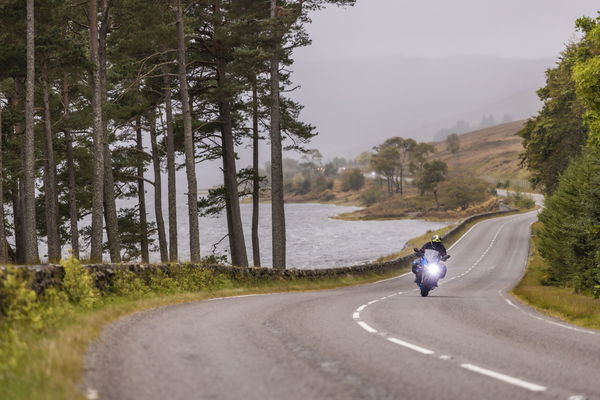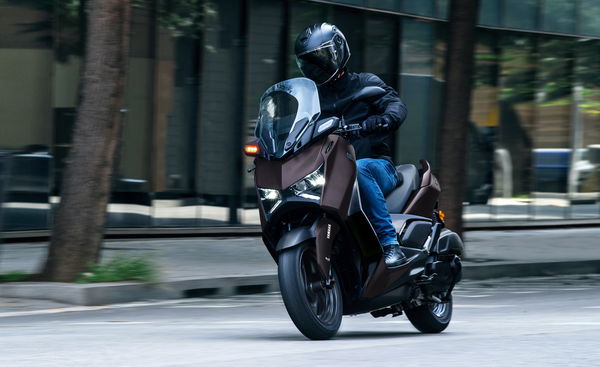Here are 10 Motorcycling Facts you (probably) didn’t know…
Get your fix of quirky motorcycle trivia here, as we have compiled 10 motorcycling facts that you probably didn't know - perfect for quizzing your mates at the pub.
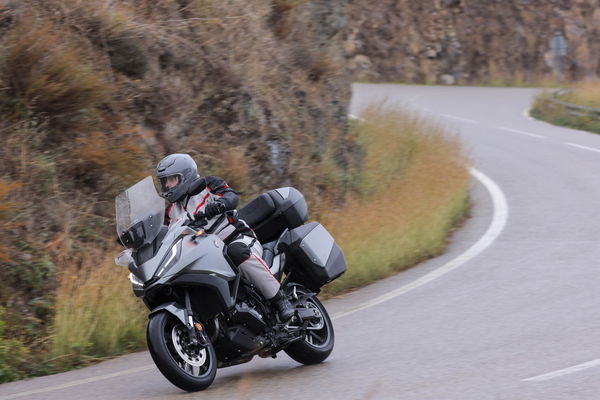
Motorcycling is full of quirky trivia, like the fact that Barry Sheene was instrumental in the invention of the back protector in the late 1970s, passing on his ideas to Dainese. Or that the legendary Captain America and Billy Bike custom Harleys used in Easy Rider started out as ex-police bikes, bought at auction. We all love some good motorcycle facts.
Those you may have already known – others, less so. Did you know, for example, that famous razor blade manufacturer Wilkinson Sword attempted to diversify into motorcycles pre-WW1 with the Wilkinson TMC? Or that TV chat show host and renown petrolhead Jay Leno has the world’s biggest individual collection of Brough Superiors? Or even that the late Honor Blackman (Pussy Galore from Goldfinger) was a true bike nut, serving as dispatch rider in WW2 and riding well into her 50s?
Well, here’s 10 more motorcycling trivia gems you (probably) didn’t already know…

BMW’s original K-series was ‘based’ on a Peugeot 104 car engine
In the late 1970s, with its air-cooled boxers aging and outgunned by the new Japanese superbikes and sales plummeting, BMW Motorrad was desperate for a new, more powerful, multi-cylinder powertrain – but one that was just as distinctive.
Transverse fours and triples were out, as was a flat ‘boxer’ four, following Honda’s launch of its Gold Wing. Instead, what young design engineer Josef Fritzenwenger came up with, in 1977, was inspired by a Peugeot 104 car engine. The liquid-cooled, all-alloy four was normally positioned transversely with the block inclined at 72 degrees.
Fritzenwenger experimented with inclining it fully flat and mounting it longitudinally with a shaft drive, something that hadn’t been done in motorcycling before…
The inventor of the scooter hated motorcycles
We all know that scooter-riding ‘Mods’ and bike-riding ‘Rockers’ hated each other in the 1950s and ‘60s but did you know that antipathy had foundations from the outset?
Italian aeronautical engineer Corradino D’Ascanio had been commissioned by Innocenti at the tail end of the war to create a new, clean, convenient commuter two-wheeler and, as he famously hated ‘bulky, dirty motorcycles’ came up with an enclosed, small-wheel ‘scooter’ design. The two fell out when Innocenti stipulated the use of a tubular steel spine frame as his company specialized in steel tube.
D’Ascanio then went to Piaggio, who had also been experimenting with two-wheelers, with the result being the first Vespa. Innocenti, meanwhile, soon followed up with the Lambretta.
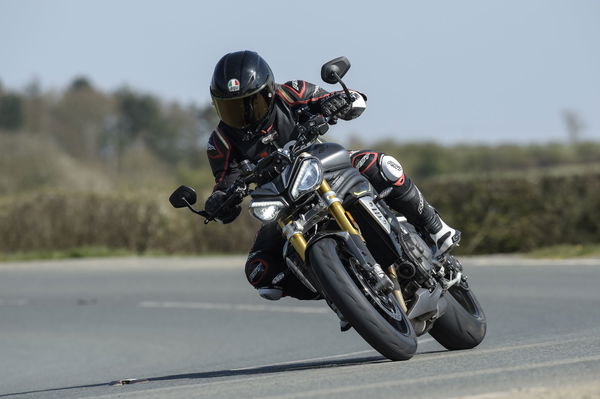
Triumph can’t make a Triumph car… because of BMW
Reviving motoring brands seems all the rage with Norton and BSA now owned by Indian companies and, in the car world, Bentley, Mini and more back in the big time, so you might think it natural that, one day, Britain’s Triumph might start building 21st century TR7s or Stags.
It ain’t gonna happen. Although the original Triumph car company was spun off Triumph motorcycles in the 1920s, the companies split in 1936 with the Triumph Motor Company eventually being absorbed into British Leyland in the 1960s then Rover in the 1980s and ‘90s.
The last Triumph badged car was the Acclaim of 1981, essentially a rebadged Honda. BMW bought the Rover Group in 1994, then broke it up and sold it on in 2000. BMW however retained the rights to many of its brands, including Mini and Triumph…
The Z1 900 first appeared as a... Honda CB750
It’s well known that Kawasaki was on the verge of launching its own 750cc four-cylinder superbike when beaten to the punch by Honda’s CB750 in 1968.
It’s also well known that, infuriated, Kawasaki went back to the drawing board determined to beat Honda and came up with the 900cc, DOHC Z1 of 1972 which not only comprehensively leap-frogged the Honda but was voted Machine of the Year six years in a row.
Less well known is the fact that, when undergoing extensive road testing in America pre-launch, Kawasaki realized they needed to disguise its creation to keep it secret. The disguise they chose was that of the CB750, including Honda tank badges and even replica Honda red livery…
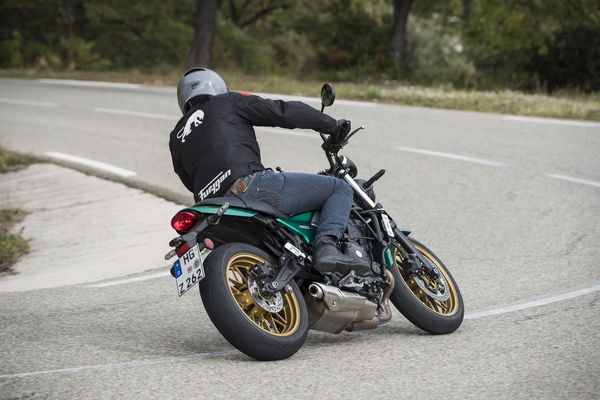
Lawrence of Arabia’s crash led to the invention of the crash helmet
TE Lawrence, better known as ‘Lawrence of Arabia’, was famously not only a true celebrity in the Post-WW1 era he was also a committed biker, just as famously owning eight Brough-Superiors, the fastest bike of the day.
On May 13 1935, however, he crashed in Dorset and, not wearing a helmet as was common in that era, suffered head injuries that proved fatal.
One of the doctors who attended him, Hugh Cairns, was inspired to begin a long study into the loss of life of motorcyclists through head injury, research which directly led to the use of crash helmets.
BMW’s roundel logo has ‘nothing’ to do with propellers
We all know BMW’s famous ‘roundel’ blue/white ‘quartered’ logo, right? It’s commonly believed to be an interpretation of a spinning propeller due to BMW’s origins in aero engine manufacture, right? Wrong.
The BMW logo as we know it today was actually an evolution of the logo of its preceding company, BFW, but with its red elements swapped for blue as a nod to the flag of Bavaria where BMW was based.
It’s believed the ‘propeller’ myth grew out of a later advertising campaign which superimposed the logo onto the image of a propeller – but it’s not where the logo came from.
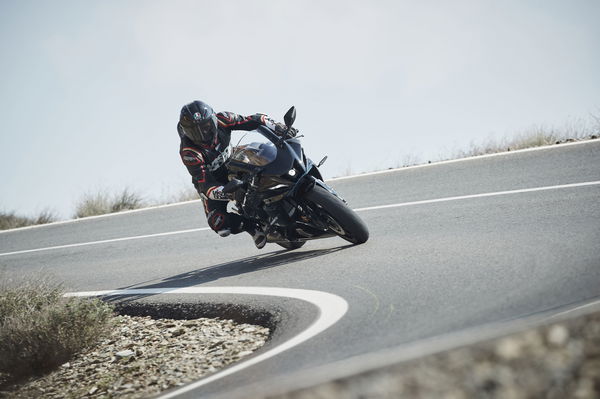
Yamaha’s RD350LC was conceived, styled and tested… by Brits
The two-stroke, twin cylinder, liquid-cooled RD350LC (and its RD250LC little brother) are surely one of the most famous Japanese bikes of all. Less well known is the fundamental influence of a group of talented Brits.
As the LC was not intended for America due to tightening emissions regulations, Yamaha Europe, based in Amsterdam, was key in its development and was headed at the time by Brit Paul Butler, later Kenny Roberts GP team manager. Butler involved Brit stylist Mike Ofield, who was fundamental in its distinctive look, while ex-Norton Villiers engineer Bob Trigg, who was also instrumental in the Norton Commando, was involved in its development.
Much of the test riding was done by Yamaha employee and British test rider Dave Bean while the desirable ‘Pro Am’ fairing kits were designed by a further Brit, John Mockett.
Triumph’s ‘T-bird’ was named after… a motel in South Carolina, USA
Triumph motorcycles often have more evocative names than most – Daytona, Bonneville, Speed Triple – with most suggesting historic racing success or romanticized connotations. But arguably the most mystical of them all is anything but.
The Thunderbird 650 of the 1950s was Triumph’s biggest bike so far, a huge success in the US, was the machine used by Marlon Brando in the iconic ‘The Wild One’ and directly led to the later Bonneville.
Its name, however, was chosen when Triumph chief Edward Turner was driving back from the Daytona, Florida races and happened to pass the Thunderbird Inn motel in Florence, South Carolina. It’s still there to this day…

Mixed imperial/metric tyre dimensions are largely the Americans fault
Ever wondered why motorcycle tyre sizes bizarrely combine metric (mm) widths and profiles and imperial (inch) diameters, for example 120/70 x 17? I blame the Americans. Imperial had long been the standard for tyre dimensions until, in the 1970s and ‘80s, European-developed radial tyres started using metric measurements.
By then the fundamental diameter measure was not only the convention but was cemented into the legislature of the world’s biggest tyre market, the US. Switching the width/profile measure to metric, however, was less contentious and quickly became the norm.
Incidentally, in the late 1970s and ‘80s, European car manufacturers did attempt to establish a new metric diameter convention, the Austin Metro being among them, although this ultimately failed…
Harley tried to trademark the sound of its engine… and failed
Until the new liquid-cooled Sportster and Pan America Harley’s big, air-cooled V-twins were as distinctive for their ‘potato-potato’ soundtrack as they were for their looks.
But did you know the American firm actually tried to trademark its sound? Well, way back in February 1994 it attempted exactly that. It filed a sound trademark application attempting to ‘own’ the distinctive, single crank V-twin sound.
Inevitably, rivals protested, claiming that their single crank V-twins would inevitably sound similar and eventually Harley’s efforts were dropped – a full six years later…
